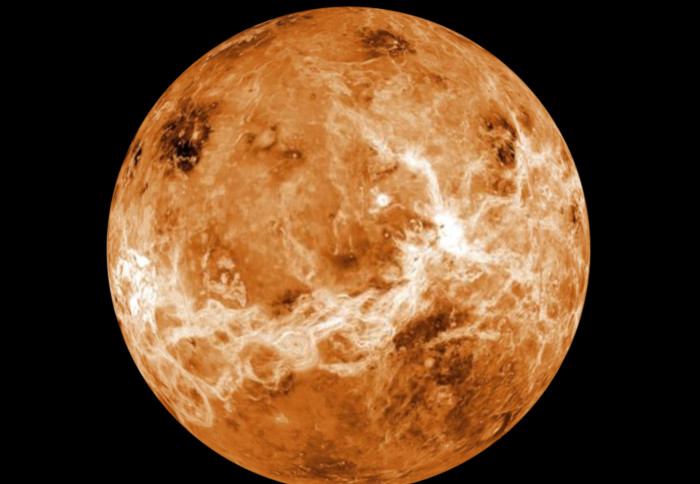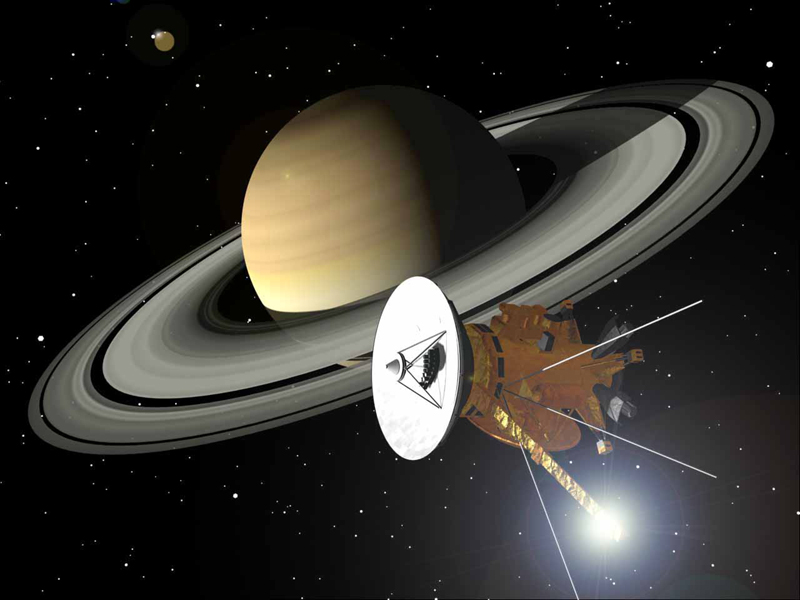Incoming! - Planetarium Show

What devastated the dinosaurs, excavated a great hole in the ground, and broke windows in Russia? And what produced the life we know on Earth, but could also destroy it? The answer: impacts from space. It's the subject of the planetarium presentation Incoming!.
Incoming!
The Morrison Planetarium in the California Academy of Sciences in San Francisco produced the show. The San Francisco area is fortunate to have experienced animators, engineers and scientists. Their expertise has produced cutting-edge visualizations to allow the audience to travel through time and space to see constructive and destructive outcomes of cosmic collisions.
George Takei, one of the stars of the original Star Trek, narrated the film. Planetarium director Ryan Wyatt wrote and directed it, Mike Jennings composed the music, and Christopher Hedge designed the soundscapes. (In the absence of any sounds from space, sounds are created that seem to match the action.)
Impacts and Earth
The story doesn't start in space, but in the Arizona desert.
When an asteroid or comet hits another body an impact crater results. Since Earth is geologically active, weathering and earth movements obscure or erase these craters. Nonetheless there is evidence of around two hundred impact craters on Earth. Barringer Crater in Arizona is one of the most famous. It's 1300 meters (0.8 mile) across and 170 meters (nearly 600 ft) deep. Whatever made that hole fifty thousand years ago must have also made an impressive bang.
Less prominent than Barringer Crater, but of more interest, is Chicxulub in Mexico's Yucatan Peninsula. Evidence strongly suggests that an impact there led to the demise of the dinosaurs that allowed our mammalian ancestors to prosper. Such an impact now would be a disaster for us.
The two largest bodies to come our way in recent centuries both seem to have exploded in the air over Siberia. The Tunguska event in 1908 was heralded by a bright fireball streaking across the sky. It didn't affect any human habitations, but a number of reindeer were killed, and in an area of 2000 square kilometers (770 sq mi) about 80 million trees were flattened.
In 2013 people in the city of Chelyabinsk also saw a bright fireball. Luckily for them the impactor was smaller than the Tunguska one, and the atmosphere absorbed much of the energy of the explosion. When the shock waves hit the ground there was considerable property damage, and hundreds of people were injured by flying glass. The planetarium audience gets to join the meteor as it zooms into the atmosphere, since observational data was used to recreate its path.
Near Earth Objects
Tons of meteoric material falls on the Earth every day, but we notice very little of it. It's mostly small meteorites plus micrometeorites that are the size of dust grains. We're concerned by large meteors, asteroids and comets that may come our way. Astronomers have found most of the larger objects, but cataloguing the rest of them is a work in progress. The Chelyabinsk meteor was completely unexpected.
Near Earth Objects (NEOs) aren't necessarily on a collision course, but their orbits can change and bring them closer, so we'd like to keep an eye on them. I don't think the planetarium wanted to send its audience away in terror so they were optimistic about dealing with a hazardous body if it were spotted.
Space and Time
The planetarium audience was taken into deep space where the asteroid belt is. NASA's Dawn mission has visited and studied two asteroids. And it's not just asteroids we need to account for, but also comets. A number of missions have flown past comets, but ESA's Rosetta mission spent two years accompanying a comet into the inner Solar System and around the Sun.
Going back in time we learn that collisions brought fragments of material together to form planets and moons. But sometimes collisions also destroyed some of these bodies. Early on in the Solar System heavy bombardment left the Moon pockmarked with craters. Yet it may have allowed life to begin on Earth when impactors brought Earth a selection of organic molecules, chemicals needed for life, and water.
Planet Nine
There is a place in the show where a presenter can tell the audience about current space missions and discoveries. We learned about the hypothesis that there is a superearth way out in the Solar System. The team working on it calls it Planet Nine and their conclusion that there is a large planet is based on the orbits of a number of distant dwarf planets.
Worth seeing?
Yes, I thought it was well worth a visit. But I will mention that at the beginning of the show the camera zoomed over the landscape in a way that made me feel rather dizzy. I didn't see why it had to be so unnaturally fast, but if you go to see Incoming! be ready to shut your eyes for the first few minutes.
I saw the show in San Francisco where it was created. However planetariums in dozens of other places also buy the Morrison Planetarium's content. An internet search might turn up a planetarium near you that's presenting Incoming!.
Note: A friend took me to the planetarium as a guest.
Incoming!
The Morrison Planetarium in the California Academy of Sciences in San Francisco produced the show. The San Francisco area is fortunate to have experienced animators, engineers and scientists. Their expertise has produced cutting-edge visualizations to allow the audience to travel through time and space to see constructive and destructive outcomes of cosmic collisions.
George Takei, one of the stars of the original Star Trek, narrated the film. Planetarium director Ryan Wyatt wrote and directed it, Mike Jennings composed the music, and Christopher Hedge designed the soundscapes. (In the absence of any sounds from space, sounds are created that seem to match the action.)
Impacts and Earth
The story doesn't start in space, but in the Arizona desert.
When an asteroid or comet hits another body an impact crater results. Since Earth is geologically active, weathering and earth movements obscure or erase these craters. Nonetheless there is evidence of around two hundred impact craters on Earth. Barringer Crater in Arizona is one of the most famous. It's 1300 meters (0.8 mile) across and 170 meters (nearly 600 ft) deep. Whatever made that hole fifty thousand years ago must have also made an impressive bang.
Less prominent than Barringer Crater, but of more interest, is Chicxulub in Mexico's Yucatan Peninsula. Evidence strongly suggests that an impact there led to the demise of the dinosaurs that allowed our mammalian ancestors to prosper. Such an impact now would be a disaster for us.
The two largest bodies to come our way in recent centuries both seem to have exploded in the air over Siberia. The Tunguska event in 1908 was heralded by a bright fireball streaking across the sky. It didn't affect any human habitations, but a number of reindeer were killed, and in an area of 2000 square kilometers (770 sq mi) about 80 million trees were flattened.
In 2013 people in the city of Chelyabinsk also saw a bright fireball. Luckily for them the impactor was smaller than the Tunguska one, and the atmosphere absorbed much of the energy of the explosion. When the shock waves hit the ground there was considerable property damage, and hundreds of people were injured by flying glass. The planetarium audience gets to join the meteor as it zooms into the atmosphere, since observational data was used to recreate its path.
Near Earth Objects
Tons of meteoric material falls on the Earth every day, but we notice very little of it. It's mostly small meteorites plus micrometeorites that are the size of dust grains. We're concerned by large meteors, asteroids and comets that may come our way. Astronomers have found most of the larger objects, but cataloguing the rest of them is a work in progress. The Chelyabinsk meteor was completely unexpected.
Near Earth Objects (NEOs) aren't necessarily on a collision course, but their orbits can change and bring them closer, so we'd like to keep an eye on them. I don't think the planetarium wanted to send its audience away in terror so they were optimistic about dealing with a hazardous body if it were spotted.
Space and Time
The planetarium audience was taken into deep space where the asteroid belt is. NASA's Dawn mission has visited and studied two asteroids. And it's not just asteroids we need to account for, but also comets. A number of missions have flown past comets, but ESA's Rosetta mission spent two years accompanying a comet into the inner Solar System and around the Sun.
Going back in time we learn that collisions brought fragments of material together to form planets and moons. But sometimes collisions also destroyed some of these bodies. Early on in the Solar System heavy bombardment left the Moon pockmarked with craters. Yet it may have allowed life to begin on Earth when impactors brought Earth a selection of organic molecules, chemicals needed for life, and water.
Planet Nine
There is a place in the show where a presenter can tell the audience about current space missions and discoveries. We learned about the hypothesis that there is a superearth way out in the Solar System. The team working on it calls it Planet Nine and their conclusion that there is a large planet is based on the orbits of a number of distant dwarf planets.
Worth seeing?
Yes, I thought it was well worth a visit. But I will mention that at the beginning of the show the camera zoomed over the landscape in a way that made me feel rather dizzy. I didn't see why it had to be so unnaturally fast, but if you go to see Incoming! be ready to shut your eyes for the first few minutes.
I saw the show in San Francisco where it was created. However planetariums in dozens of other places also buy the Morrison Planetarium's content. An internet search might turn up a planetarium near you that's presenting Incoming!.
Note: A friend took me to the planetarium as a guest.
You Should Also Read:
Rosetta the Comet Chaser
Cosmic Collisions
European Astrofest 2017

Related Articles
Editor's Picks Articles
Top Ten Articles
Previous Features
Site Map
Content copyright © 2023 by Mona Evans. All rights reserved.
This content was written by Mona Evans. If you wish to use this content in any manner, you need written permission. Contact Mona Evans for details.







